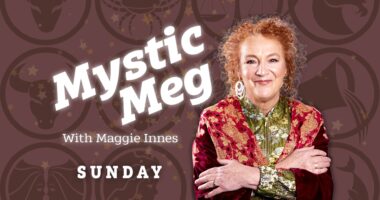Share to Facebook Share to Twitter Share to Linkedin
The Supreme Court struck down a lower ruling in the case that the government’s communication … [+]
directed at the platforms over Covid-19 misinformation violated the First Amendment. (Photo by Robert Alexander/Getty Images)
Getty Images
We shouldn’t expect the flow of misinformation or disinformation on social media to slow. Still, at least the floodgates will be perhaps a bit less open following Wednesday’s Supreme Court decision. The high court ruled in Murthy v. Missouri that the individual and state plaintiffs did not have standing to seek a preliminary injunction against federal executive-branch officials and agencies over their official communications with social media companies regarding the spread of misinformation online. The Supreme Court struck down a lower ruling in the case that the government’s communication directed at the platforms over Covid-19 misinformation violated the First Amendment. The decision will permit the government to call upon tech companies to remove falsehoods—which could be critical in the run-up to the presidential election in November.
Opinions on the high court’s decision have been mixed, with some suggesting it was a necessary step in stopping misinformation, while others have argued it could encourage government “censorship” on the platforms.
“There are essential moments when our government should be allowed, even encouraged, to contact private companies like social-media platforms and provide factual information to them, especially when issues of foreign interference, election integrity, national security and encouragement of violence crop up online and pose real-world threats. In its ruling in Murthy v. Missouri, the Supreme Court didn’t reach the question of whether the First Amendment restricts government engagement with private speech,” said Nora Benavidez, Free Press senior counsel and director of Digital Justice and Civil Rights, via an email. “Of course, we should be wary of government intrusions into private speech, including possible official efforts to coerce social-media platform’s behavior,” added Benavidez. “We know that officials sometimes abuse their power to limit speech from dissenting and minority opinions. Risks to free speech should not be taken lightly. But the Biden administration’s efforts to fight misinformation do not amount to censorship; rather, they are efforts to make platforms aware of the potential public harms that could result from the unvetted spread of falsehoods via their networks.”
TITLE: MORE FOR YOU
Biden Vs. Trump 2024 Election Polls: Trump Leads By 6 Points—And Most Voters Think He’ll Win Debate, New Survey Finds
ISS Astronauts Take Shelter After Russian Spacecraft Breaks Up In Orbit
Samsung Confirms Highly Anticipated Galaxy Z Fold Launch Details
There has been vocal criticism of the ruling, from several groups including the Children’s Health Defense, which released a statement: “CHD is deeply disappointed in the Supreme Court’s decision in Murthy v. Missouri to reverse the preliminary injunction that the Western District of Louisiana granted and the Fifth Circuit affirmed. We consider the government’s role in coercing and encouraging censorship by social media platforms the greatest threat to free speech in our time.”
Confronting Misinformation Needs To Continue Given the great divide in the nation, it was also expected that Americans would be divided on the SCOTUS decision, yet experts have suggested that the problem of misinformation remains and the ruling may not fully address it.
“Misinformation has been—and continues to be—an issue on social media platforms. The Supreme Court’s ruling is an important one. It showed the Biden Administration didn’t put pressure on the likes of X—formerly Twitter—or Facebook to censor content,” explained Jason Mollica, lecturer in the School of Communication at James Madison University. “The case is a good example of the tension between strong protection of First Amendment principles, and some of the costs of those protections,” added Dr. Cliff Lampe, professor of information and associate dean for academic affairs in the School of Information at the University of Michigan. “In this particular case, both things are true,” Lampe continued. “This case does reify the protection of the free speech of the platforms, which are not government agencies. At the same time, this does mean that misinformation can be propagated more easily—as often bad misleading information is protected by free speech rules as well.” Moreover, the SCOTUS ruling ultimately won’t solve the problem of misinformation for the most part. “While the White House and certain government agencies can request content be removed, it does not mean posts will be removed or even have a warning,” said Mollica. “In its ruling, the court did not set standards, nor was it requested, for what would be considered overreach by the government. It would help, in these kinds of cases, to have guidelines for what and what is not acceptable.” Until those guidelines present themselves, the problem of misinformation is likely to continue—even





